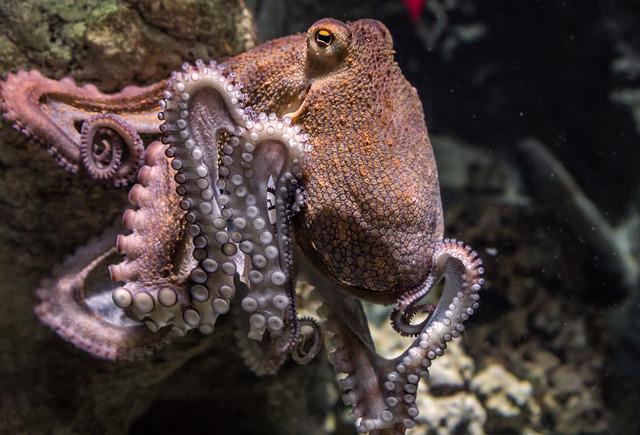An analysis of video footage of octopuses in the waters in Australia “throwing” shells and silt suggests that they deliberately attack – and frequently attack other Octopuses. Most of the time, the females throw, and often towards males who are harassing them.
In 2015, Peter Godfrey Smith from the University of Sydney and his colleagues captured a number of common Sydney Octopuses (Octopus Tetricus) engaging in a particular area in Jervis Bay dubbed “Octopolis”. It’s one of the few areas in the otherwise sand bottom of the ocean where octopuses are able to build dens, and there is an uncommon amount of animals living in a very small space.
The cameras caught mating, fights and unusual behaviour that the team has dubbed throwing. “It’s hard to know how best to describe it,” Godfrey-Smith says. The octopuses suck silt, algae or even objects such as shells or silt under their tentacles. They then turn their siphons to shoot a water jet towards the projectiles, pushing them to multiple body lengths. The throwing technique was thought to be utilized for throwing away leftover food items or to dig up dens, but the footage also revealed numerous instances of octopuses striking people with thrown objects.
When Godfrey Smith described this behaviour in a talk in 2015, he was unsure if they were deliberately targeting other octopuses or accidentally hitting them. Now, the team has additional footage, and thorough analysis has revealed the distinctions between throws targeted at other animals and those to clear dens, suggesting that the octopuses may be deliberately targeting other animals.
Related Articles
- This Incredible Footage Shows A Sleeping Octopus Changing Color While Dreaming
- United Kingdom Declares Octopuses, Squids Are Sentient Beings
For example, the female octopus was able to throw silt at the male in a nearby den, who was trying to get her to mat with her. The octopus landed on him five times. “That sequence was one of the ones that convinced me [it was intentional],” Godfrey Smith says.
On four occasions the male tried at “duck”, though he always failed to achieve success. In two instances, the male anticipated the throws of the female’s movements and then began skidding before the silt launched at him.
In the case of other predators, Octopuses were more likely to throw silt rather than shells, and throwing was more powerful. Furthermore to that, throws made during the process of building dens were generally directed toward the front two tentacles. When throwing at other creatures, they sometimes placed the throw across the tentacles of the first and second either on either side. “That suggests a kind of targeting,” Godfrey Smith says.
In one instance, researchers observed an Octopus throw a shell at the other octopus, throwing it out using a tentacle similar to frisbees, but not by propelling the material using its siphon.
Although many wild animals throw or propel objects at other animals, only a few, such as chimpanzees who, have been known to target their species. Godfrey Smith says that throwing objects at other members is a rare thing. Two times, an Octopus hit a fish on two occasions. However, one of these collisions seemed to be accidental. Sometimes, the animals seemed to aim at the camera and hit the tripod twice.
Although the throwing may be used as an attack method, the team has not seen any targeted octopus react by throwing or attacking back. Furthermore, throws made after intense social interactions don’t seem directed at another octopus but rather into empty space. This suggests that the animals may be venting frustration.
In one case, a male tried to approach a female but was rejected. He then threw a shell at random and changed its colour. After a paper suggesting that polar bears may use rocks or lumps of ice as weapons in hunting, the team decided to publish their findings as a preprint.
Credit: newscientist.com







